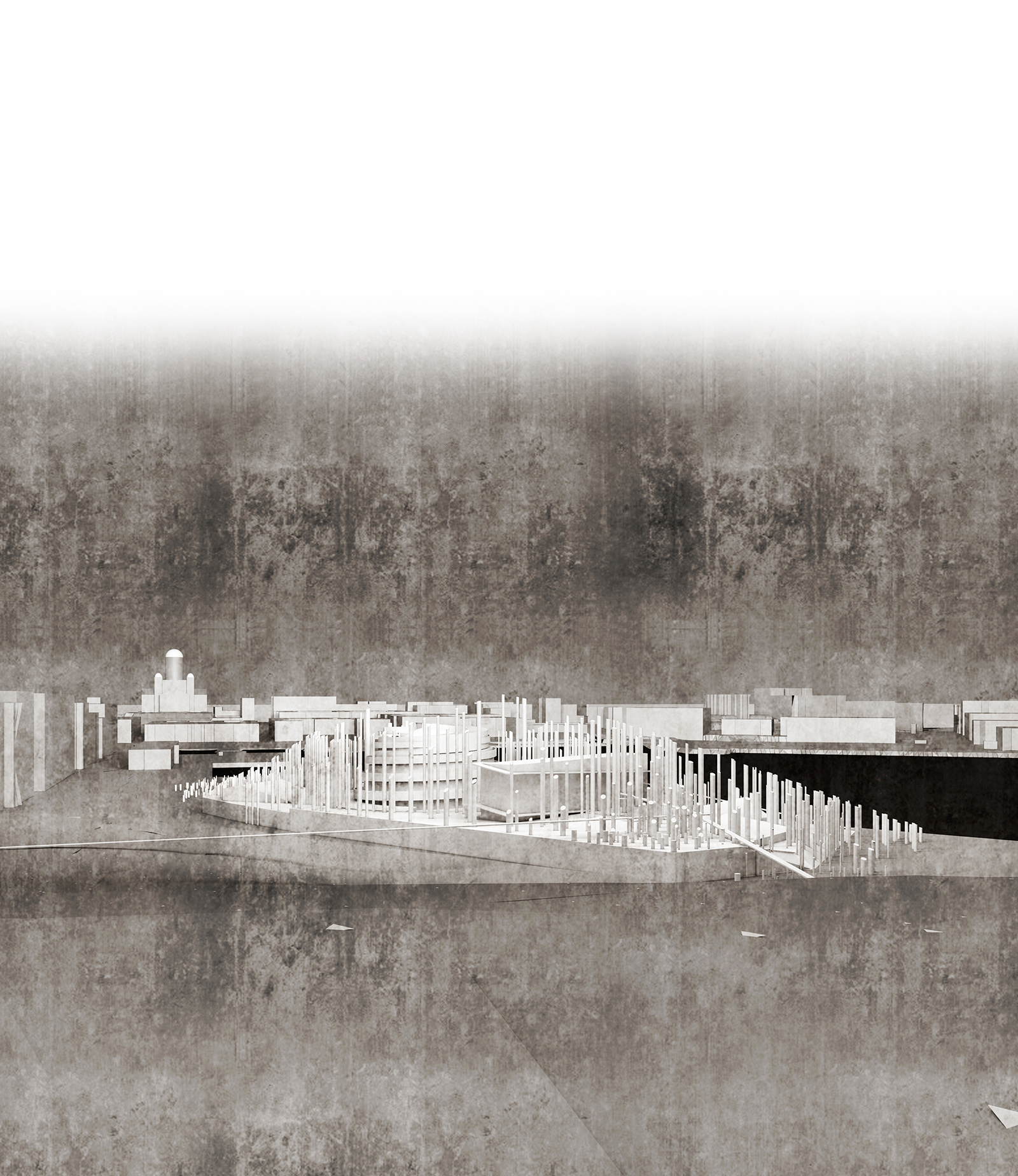
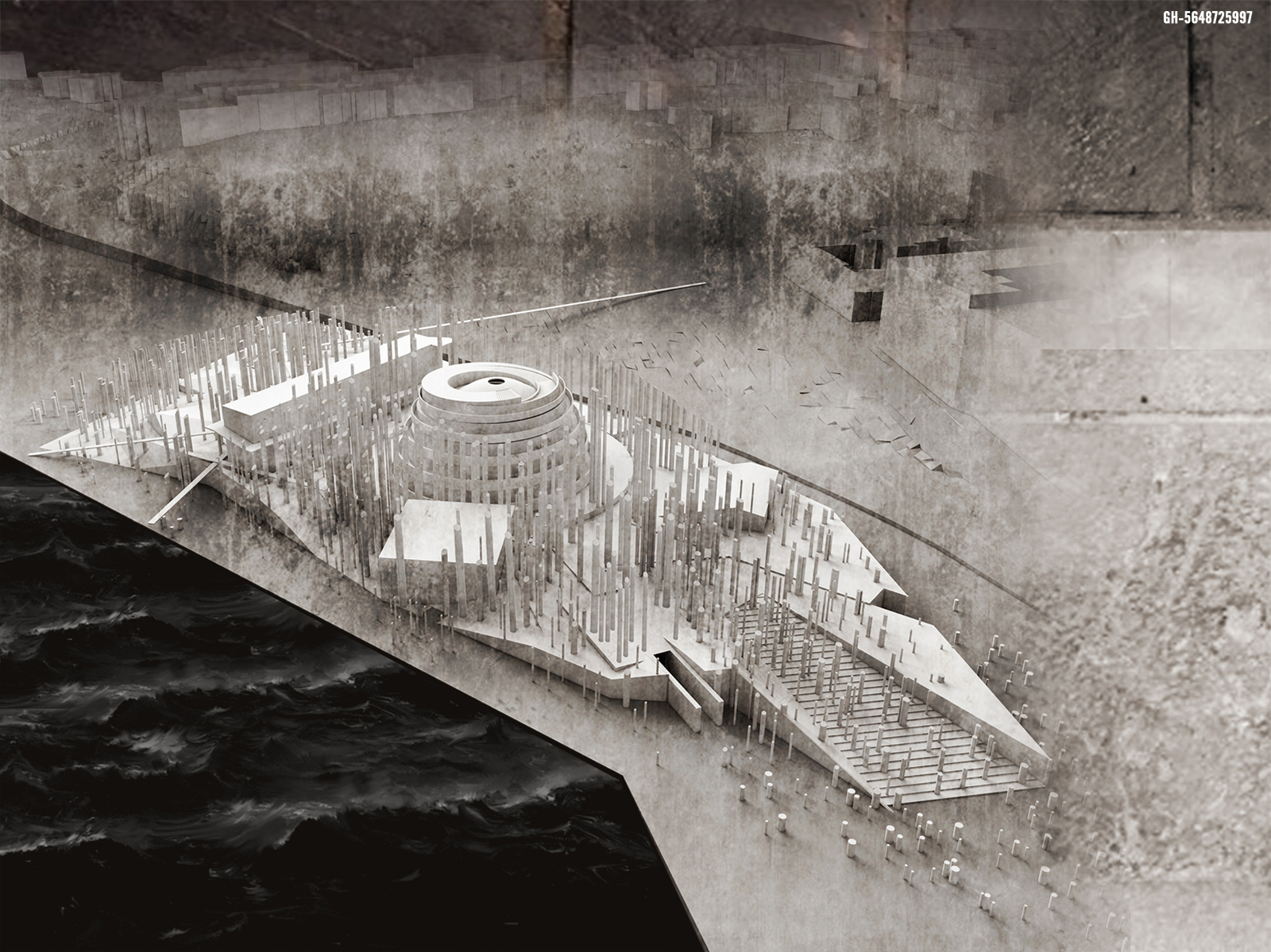
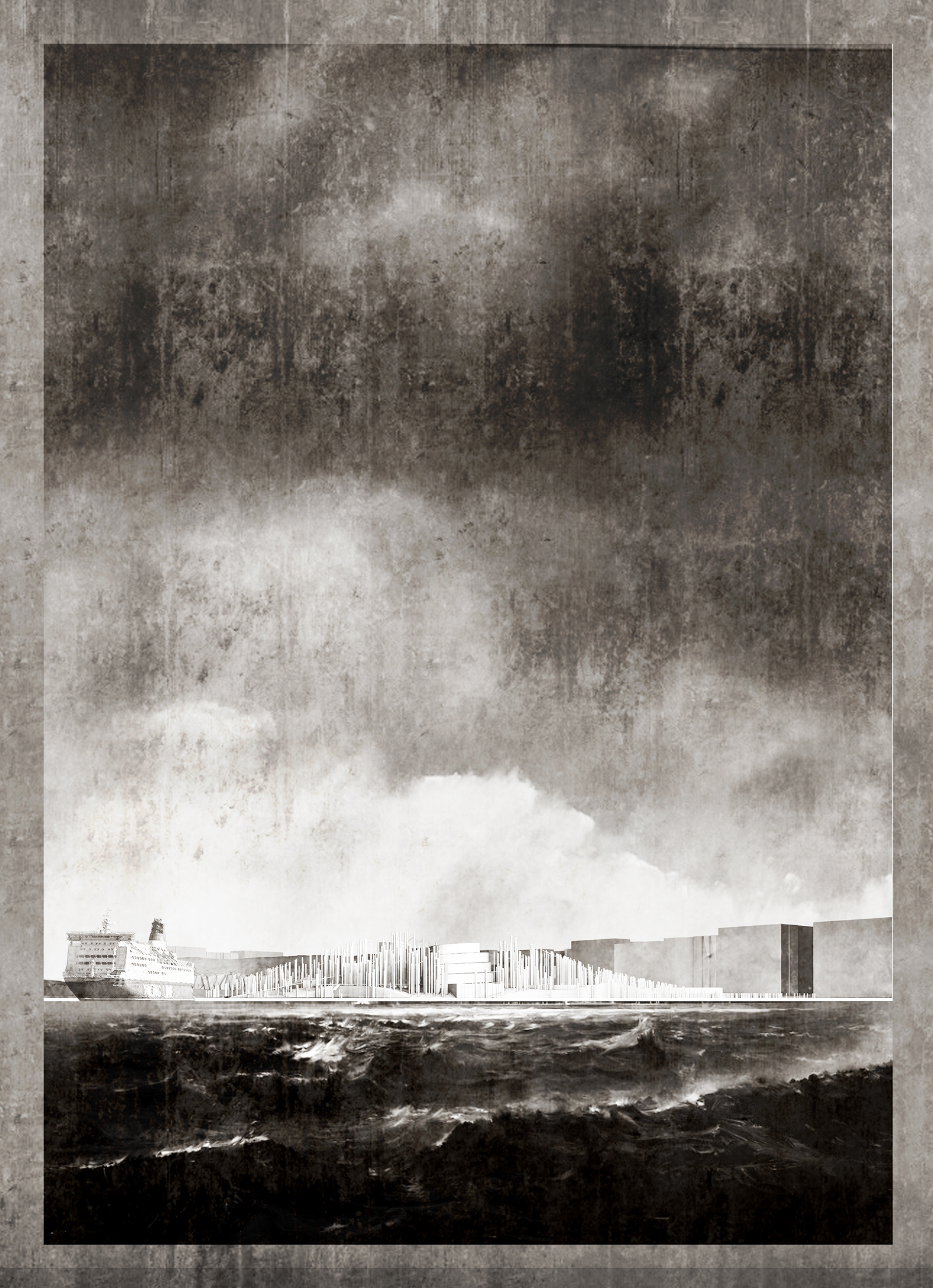
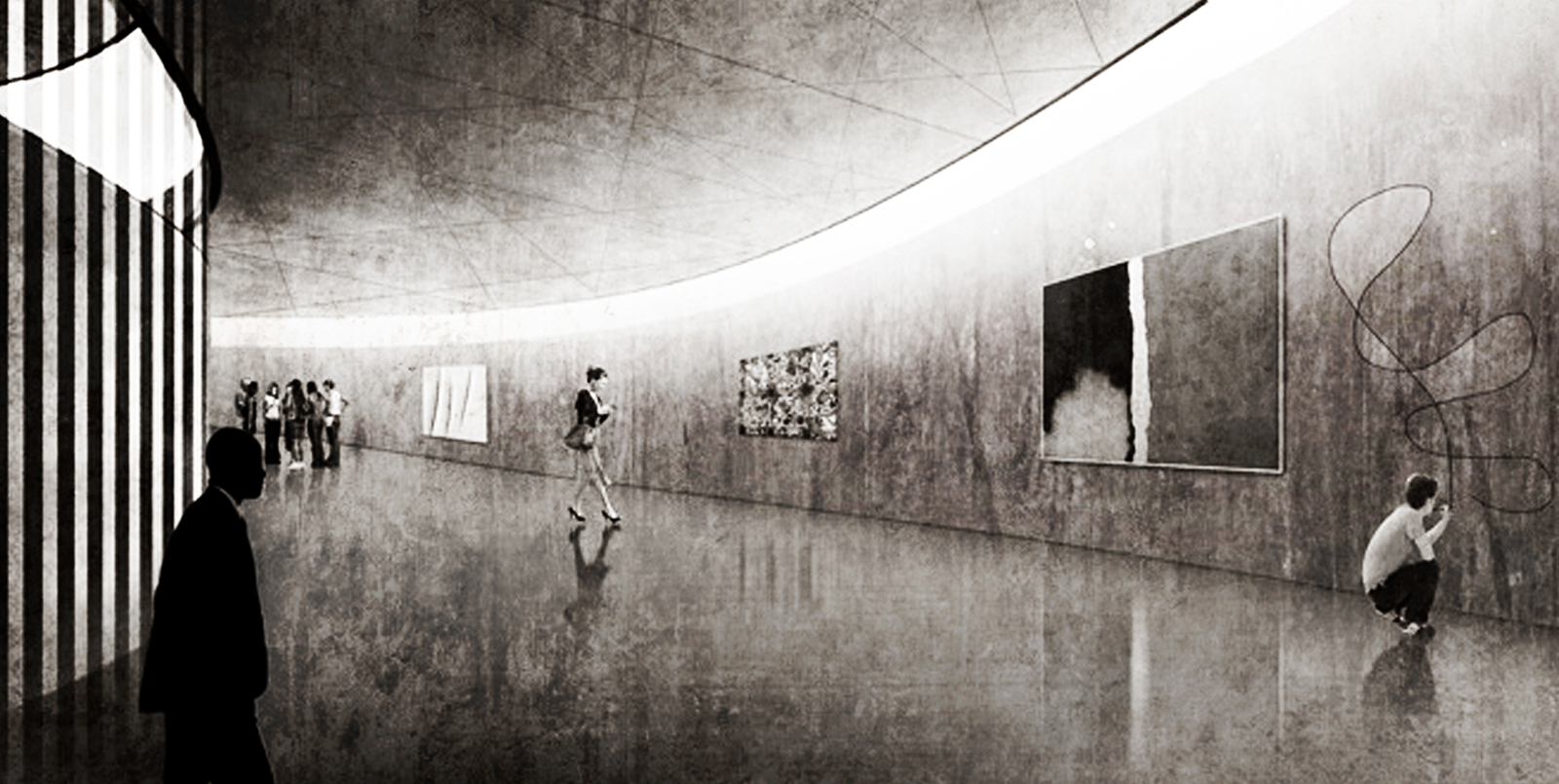

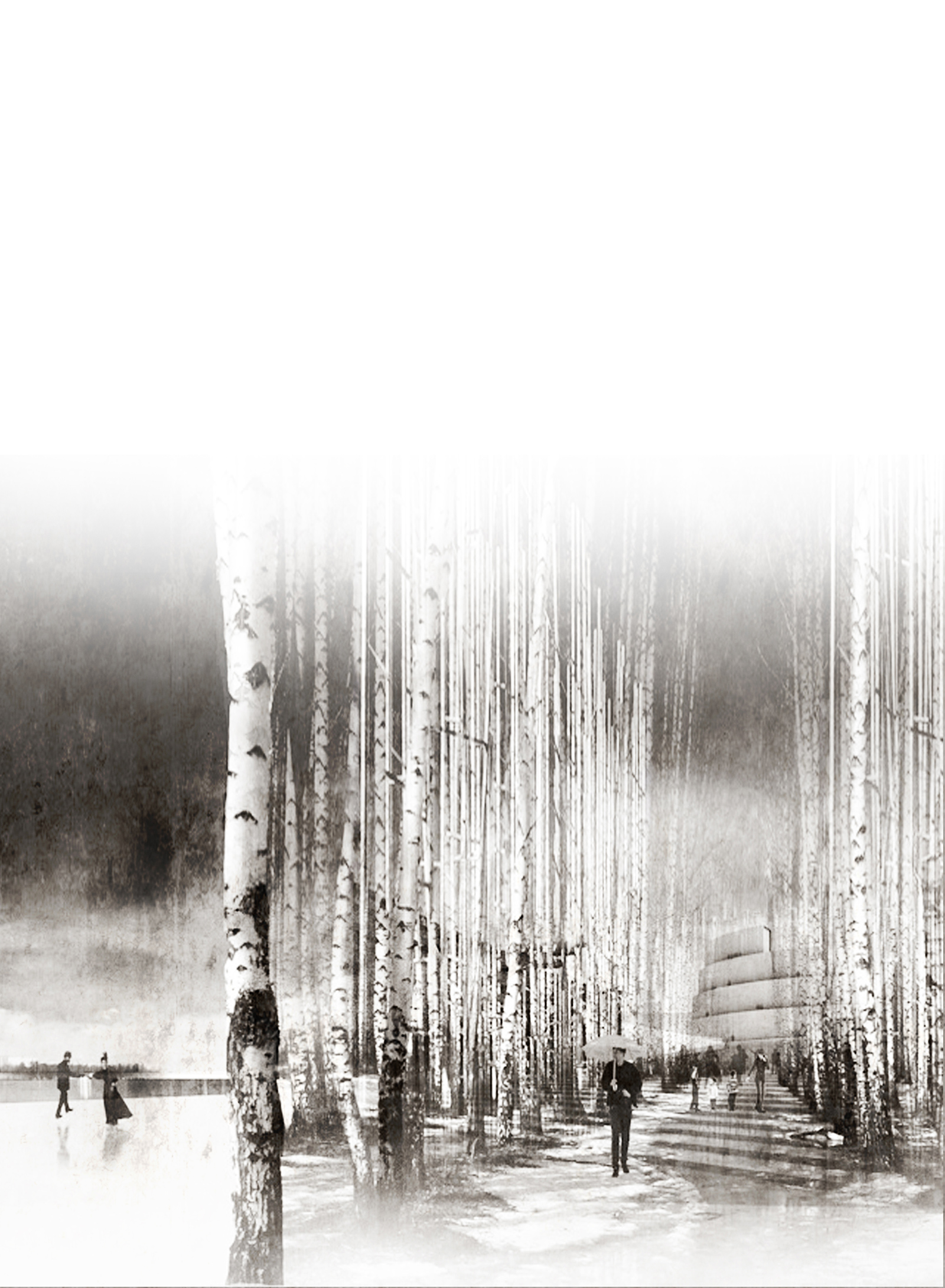
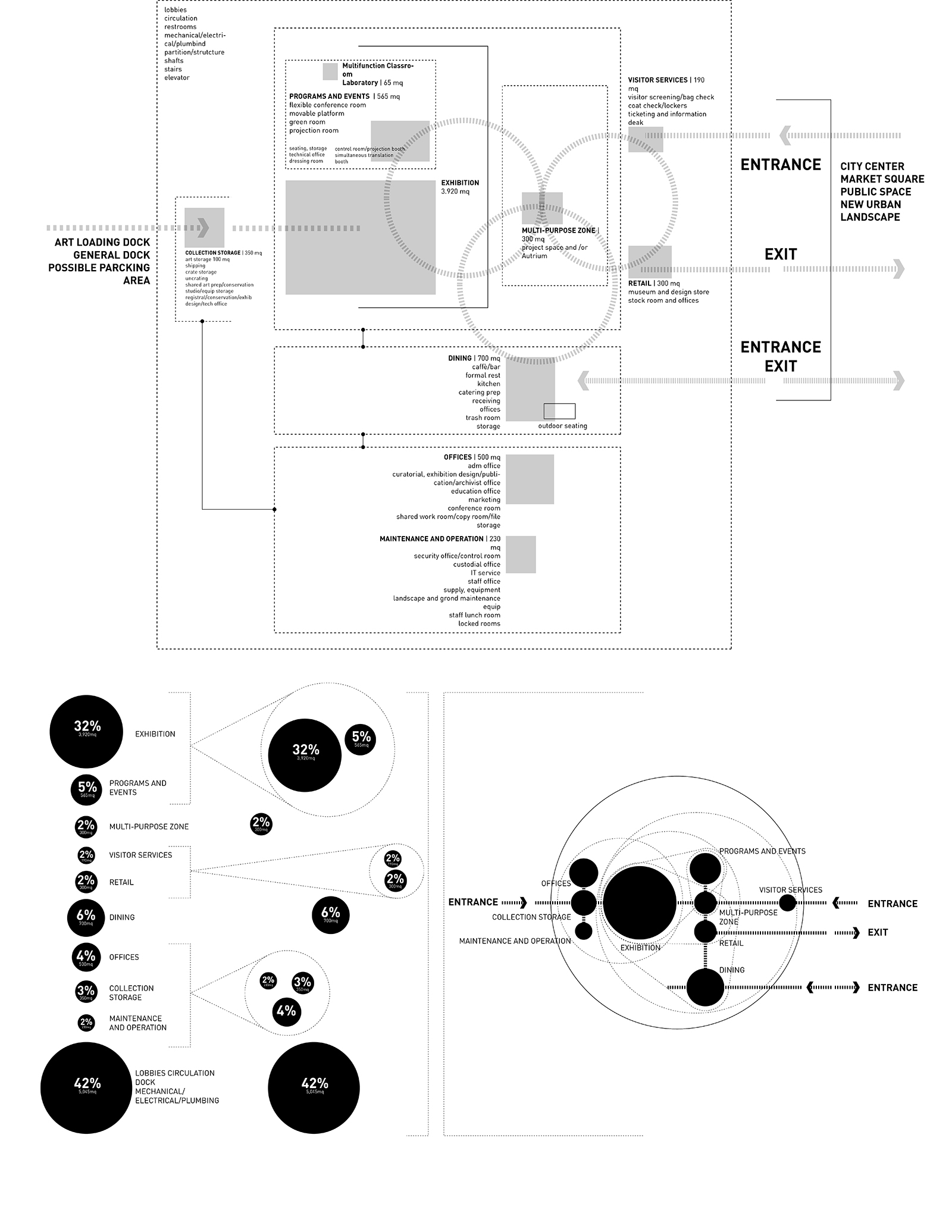
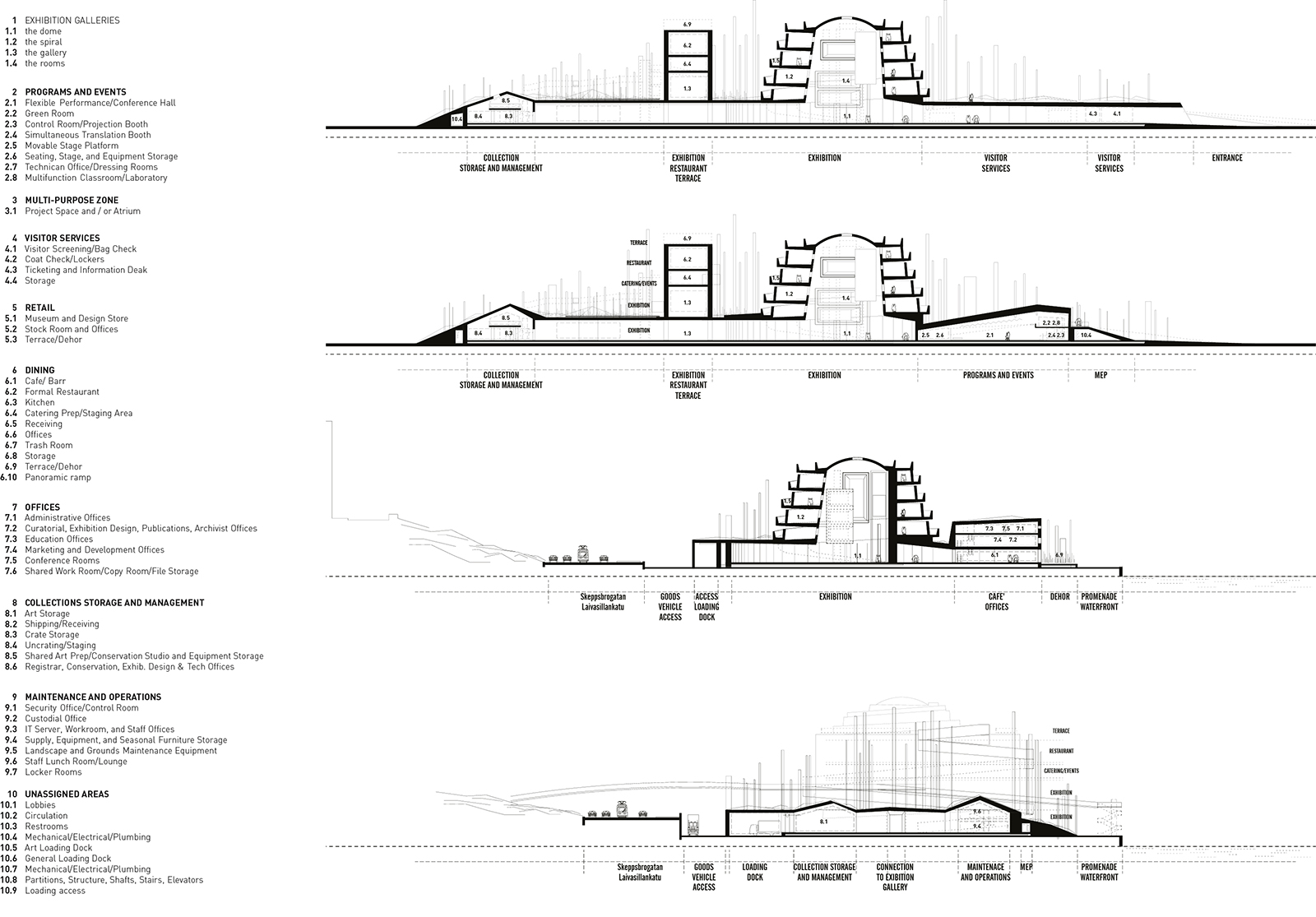
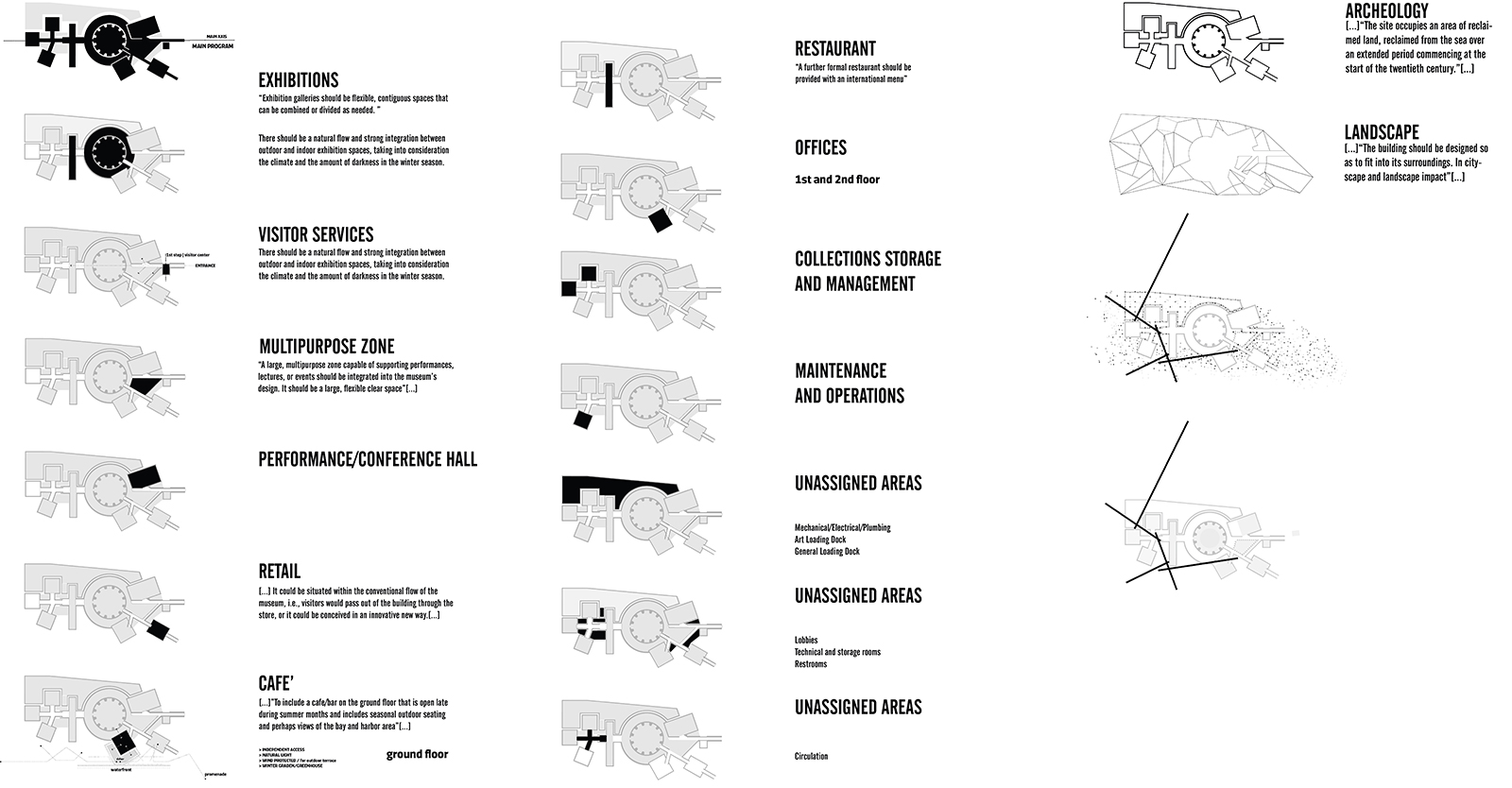
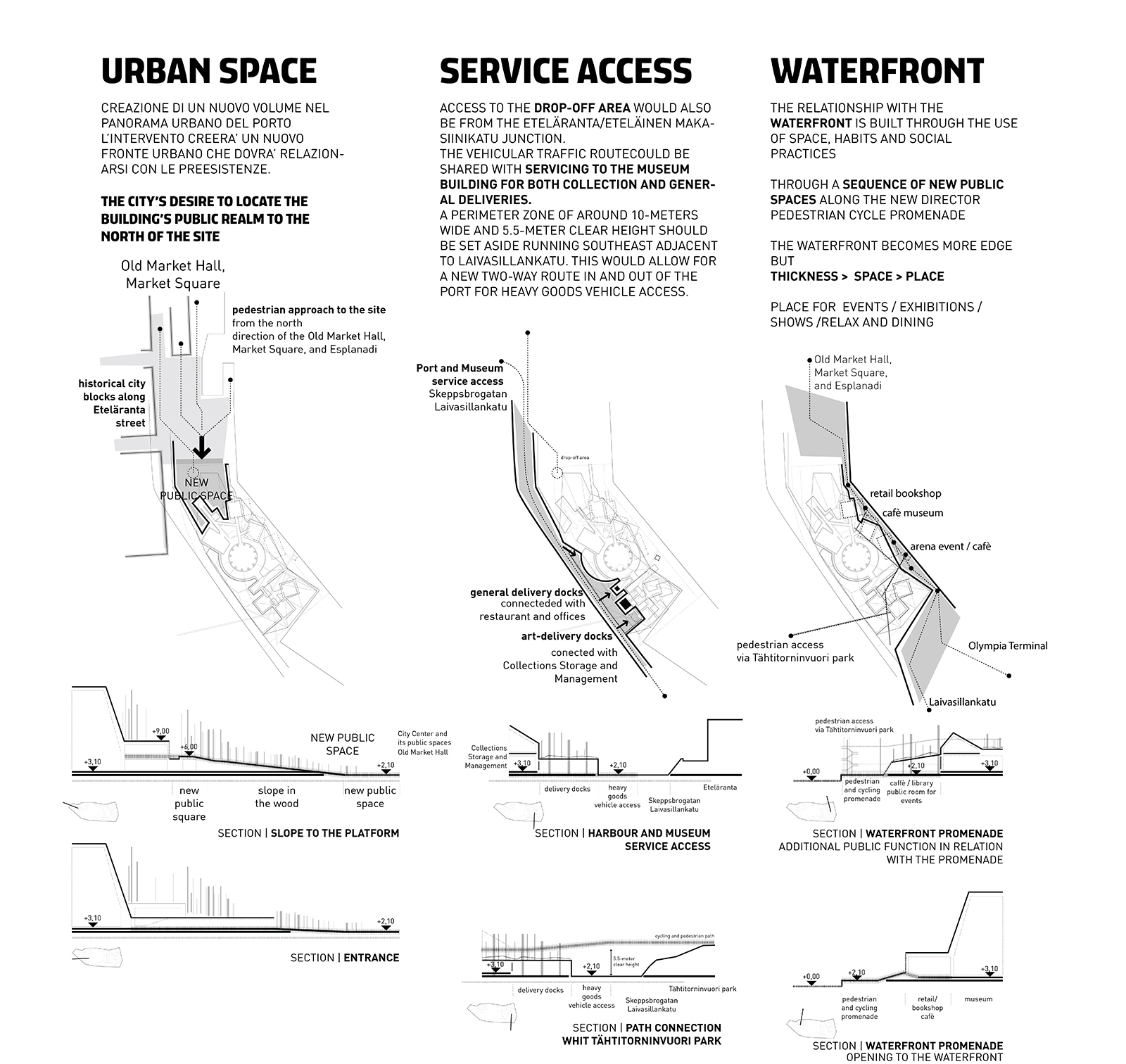
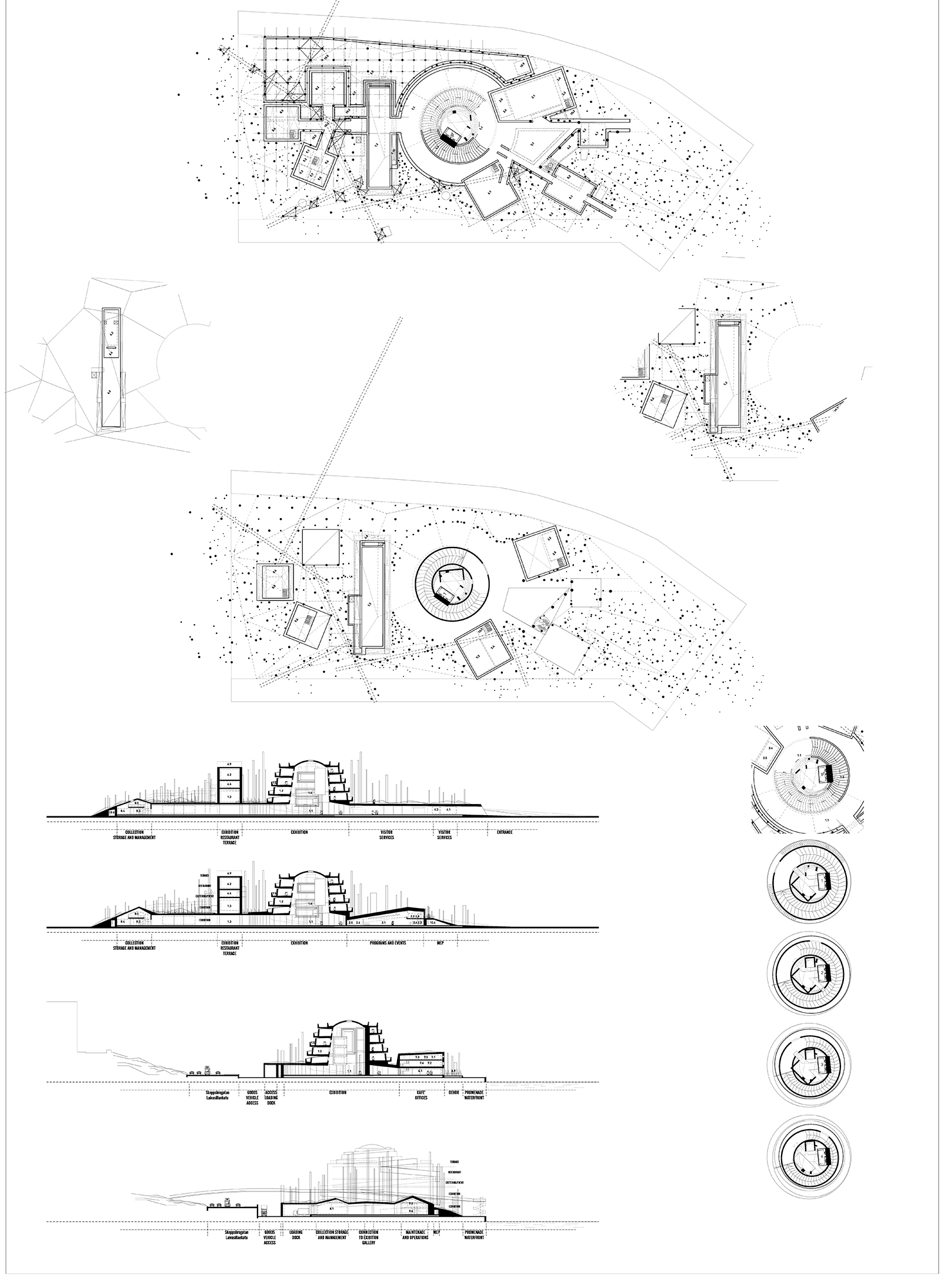
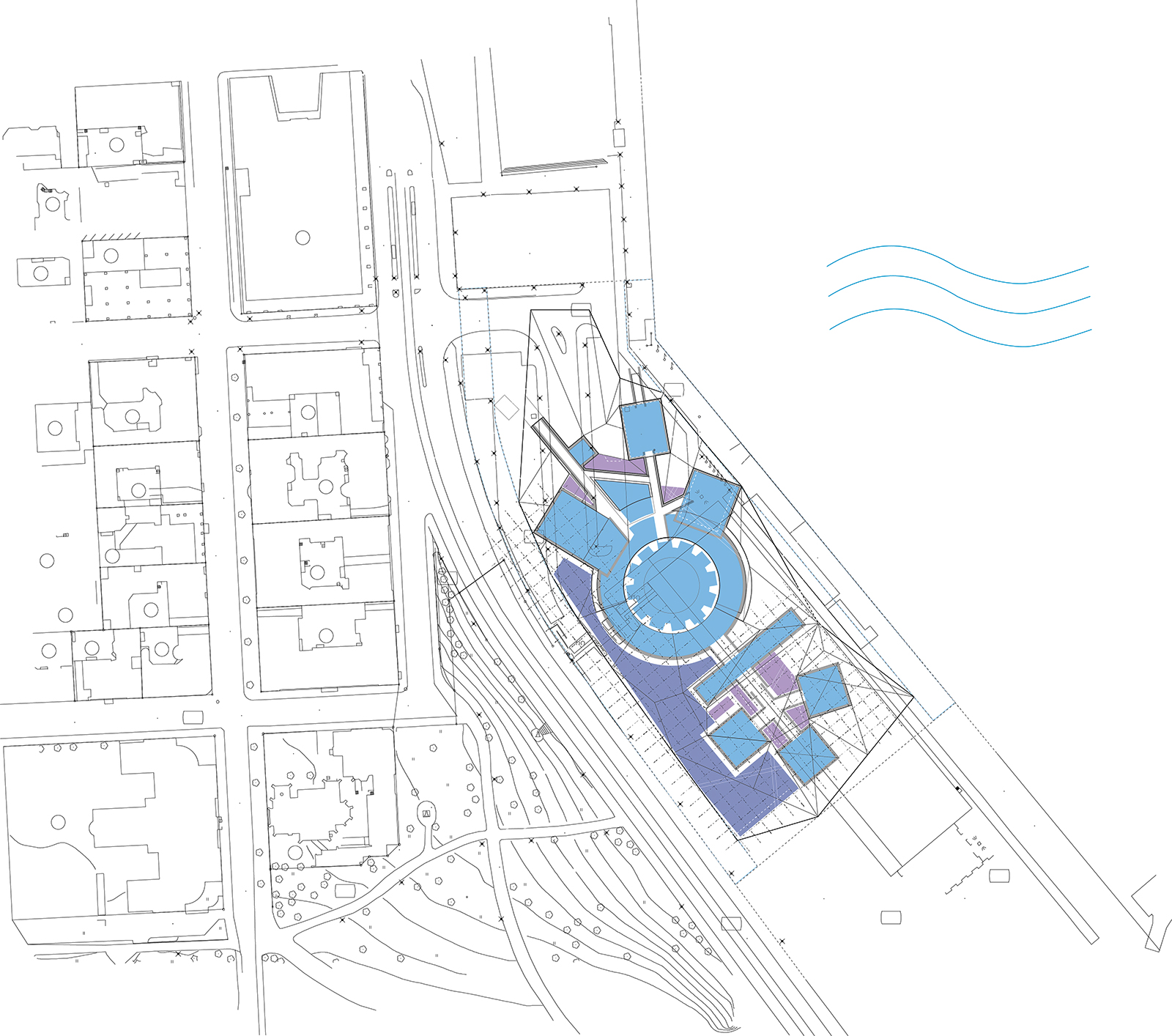
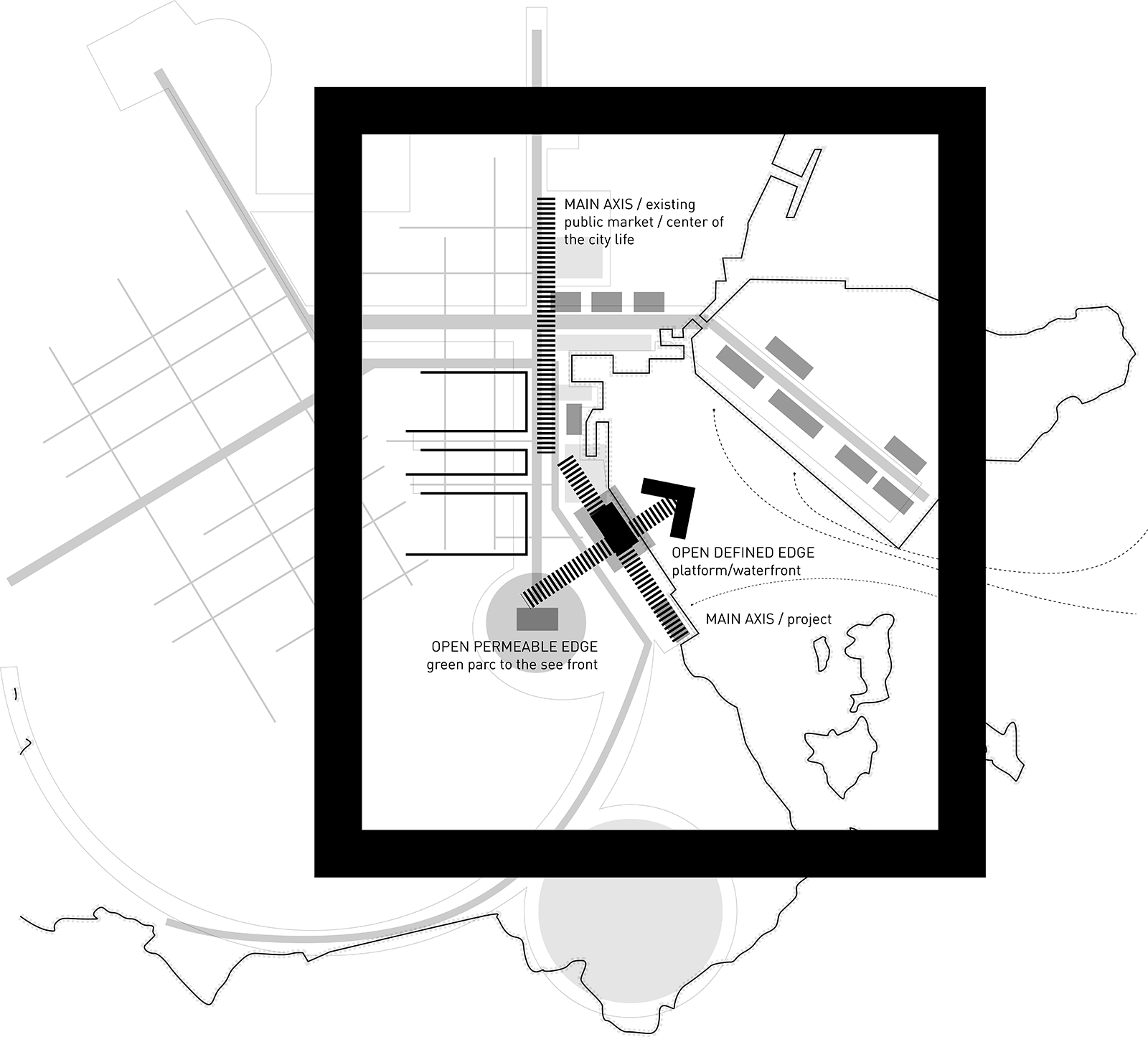
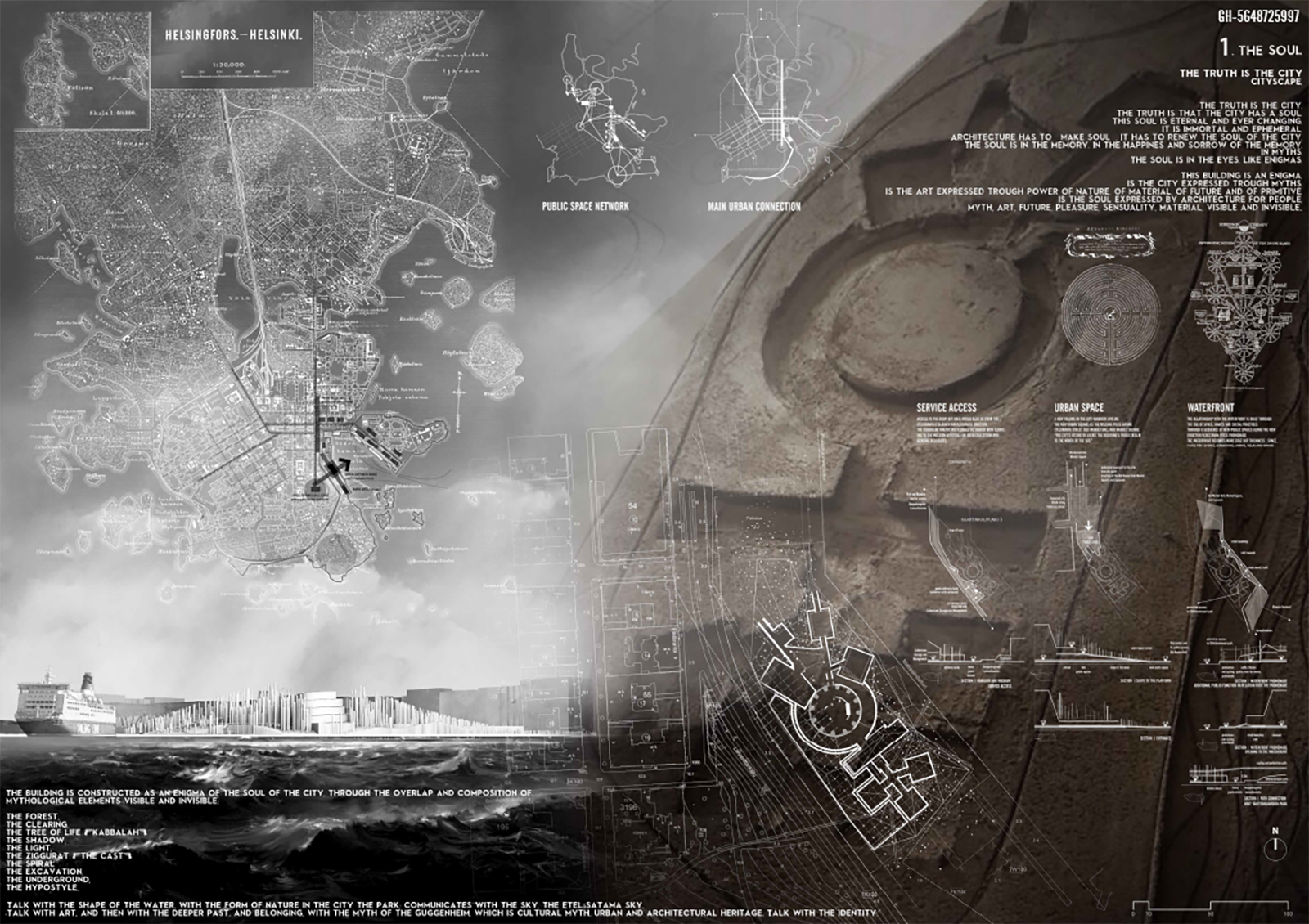
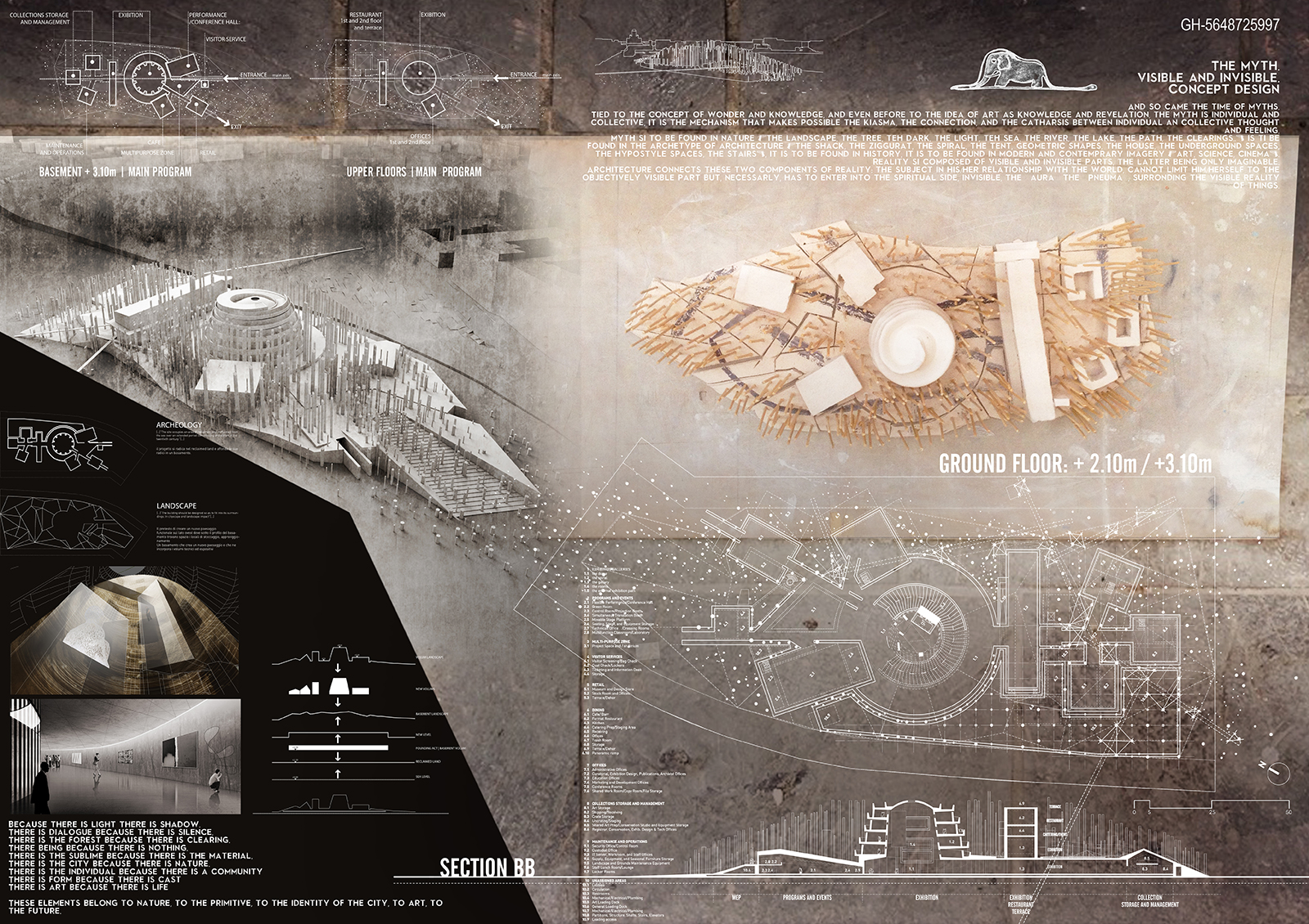
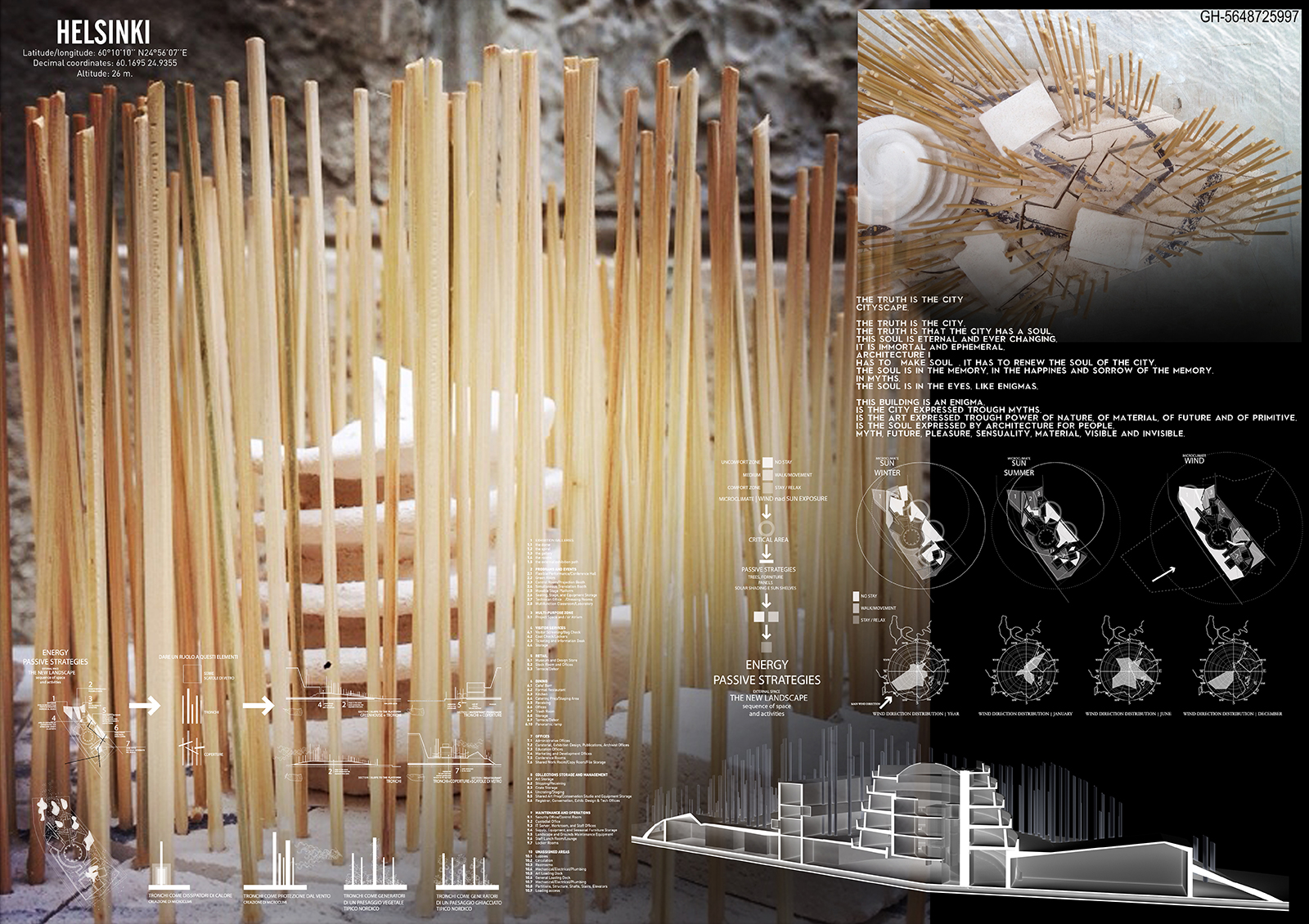
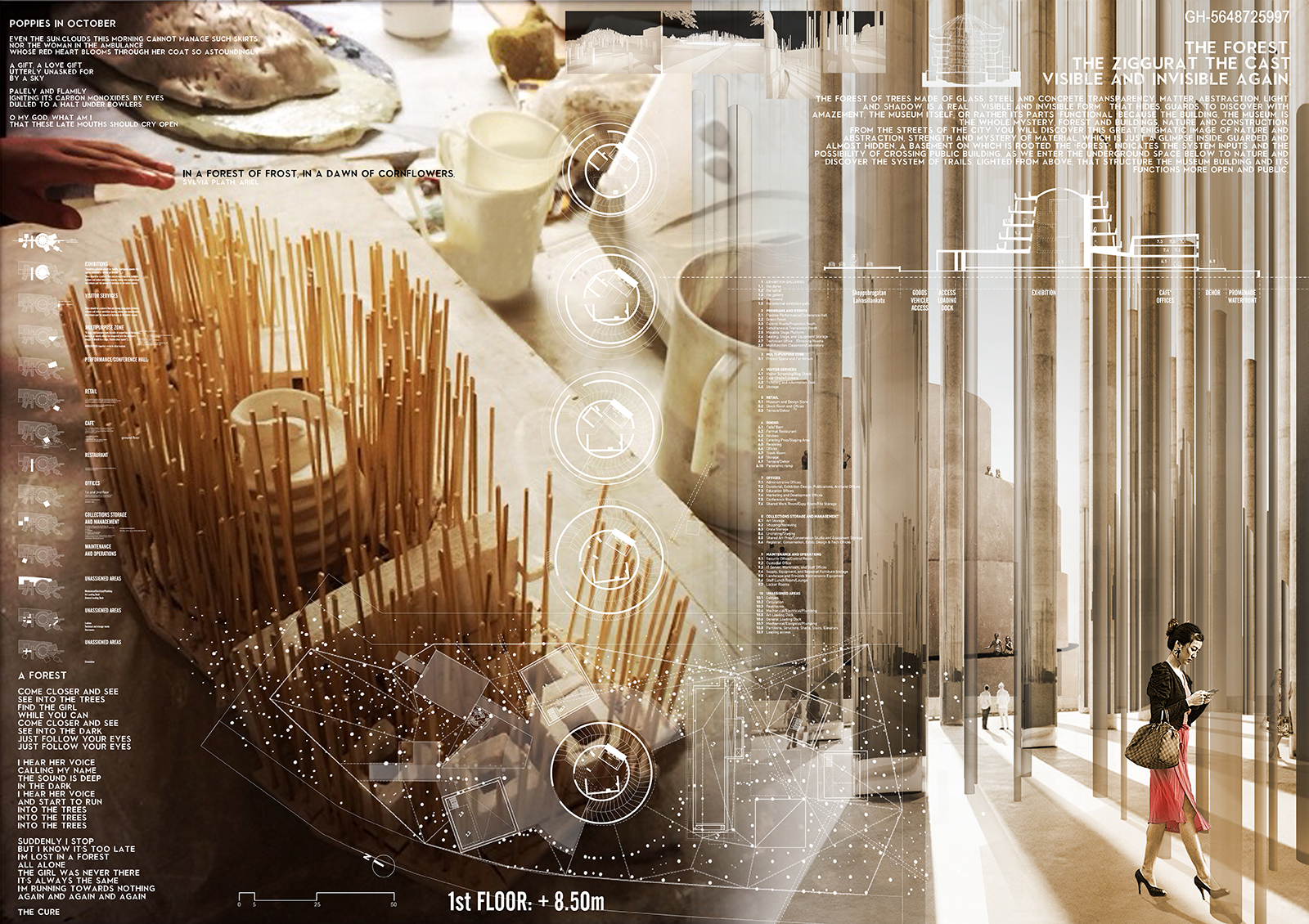
Helsinki (Finland)
International Competition 2014
program: Project for the new Guggenheim Museum in the former Kanava Terminal Building area at the Helsinki harbor.
area: 12.100 m2
client: Guggenheim Foundation
project: Alfonso Femia / Atelier(s) Alfonso Femia
images: ©Alfonso Femia / Atelier(s) Alfonso Femia
The visitor experience will be at the centre of the environmental strategy. Thanks to the accurate control of the daylight, the external microclimate will reflect both the harshness of the environment and the passive response of the building to the extreme winter conditions of Helsinki.”
SOUL. THE TRUTH IS THE CITY. CITYSCAPE
Through time, stratification and uses, the city is made up of places and practices joined together by an invisible thread that defines relationships and lines of movement. The new Guggenheim becomes one of the points of this sequence of places, point of convergence in the new urban area, linking the harbor to the historical city center and its public context.
The desire to create a new urban space brings the project to shape its boundaries with its own context and to respond to the specificity of these realities:
• the new urban square as the missing piece among Eteläranta Street, Old Market Hall and Market Square;
• the waterfront as part of the new pedestrian cycle promenade from the old city center and the historical harbor to the pedestrian deck of the Olympia Terminal;
• the access to the drop-off area from the Eteläranta creating a technical wall;
• the park Tähtitorninvuori as the integration of the new landscape through the pedestrian path over Eteläranta Street.



